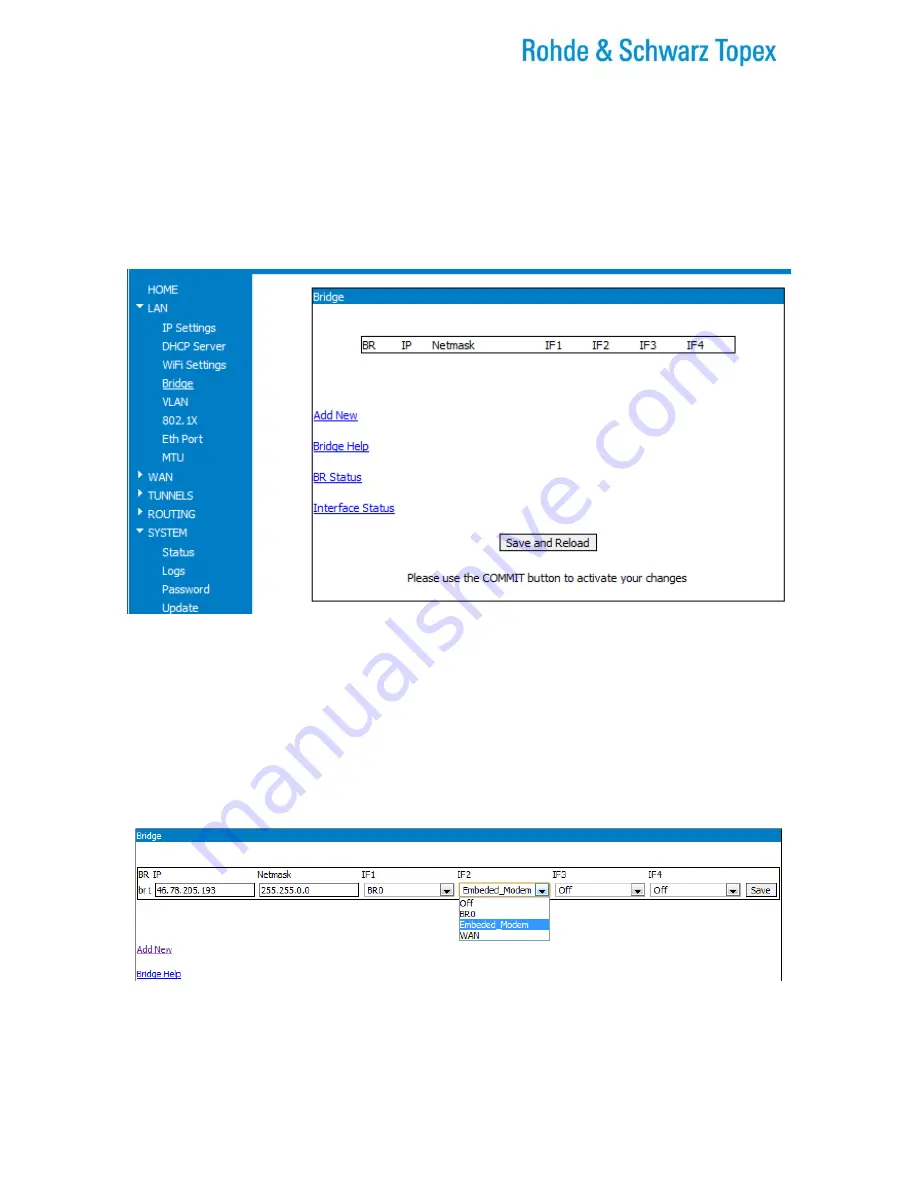
TOPEX Bytton (HSPA+ / LTE)
ByttonLTE(full)_genericUsermanual_sw306FAS_revN.1.docx
Page: 97 / 290
5.2.8 Bridge
This page lets you to define and configure bridges between different physical or virtual interfaces of the
Bytton LTE equipment.
“Bridging” is a technique for creating a virtual, wide-area Ethernet LAN, running on a single subnet, by
joining different physical or logical interfaces.
In the beginning, the Bridge table is empty.
Figure 5-44: “Bridge” configuration page, empty in the beginning.
Bridging in Bytton LTE is a logical extension of the concept of Ethernet switch, bringing together several
real or for logical interfaces. Bridging for Ethernet networks essentially involves combining an Ethernet
interface with one or more virtual TAP interfaces and joining them together under the umbrella of a single
bridge interface.
Generally, Ethernet bridges represent the software analog to a physical Ethernet switch. The Ethernet
bridge can be thought of as a kind of software switch which can be used to connect multiple Ethernet
interfaces (either physical or virtual) on a single machine while sharing a single IP subnet.
Most of the applications are related to building virtual private networks, for instance by bridging a physical
Ethernet interface with an OpenVPN-driven TAP interface at two separate locations, it is possible to
logically merge both Ethernet networks, as if they were a single Ethernet subnet.
The Bridge feature of Bytton LTE consist of a table (by default empty) and several useful links beneath it.















































